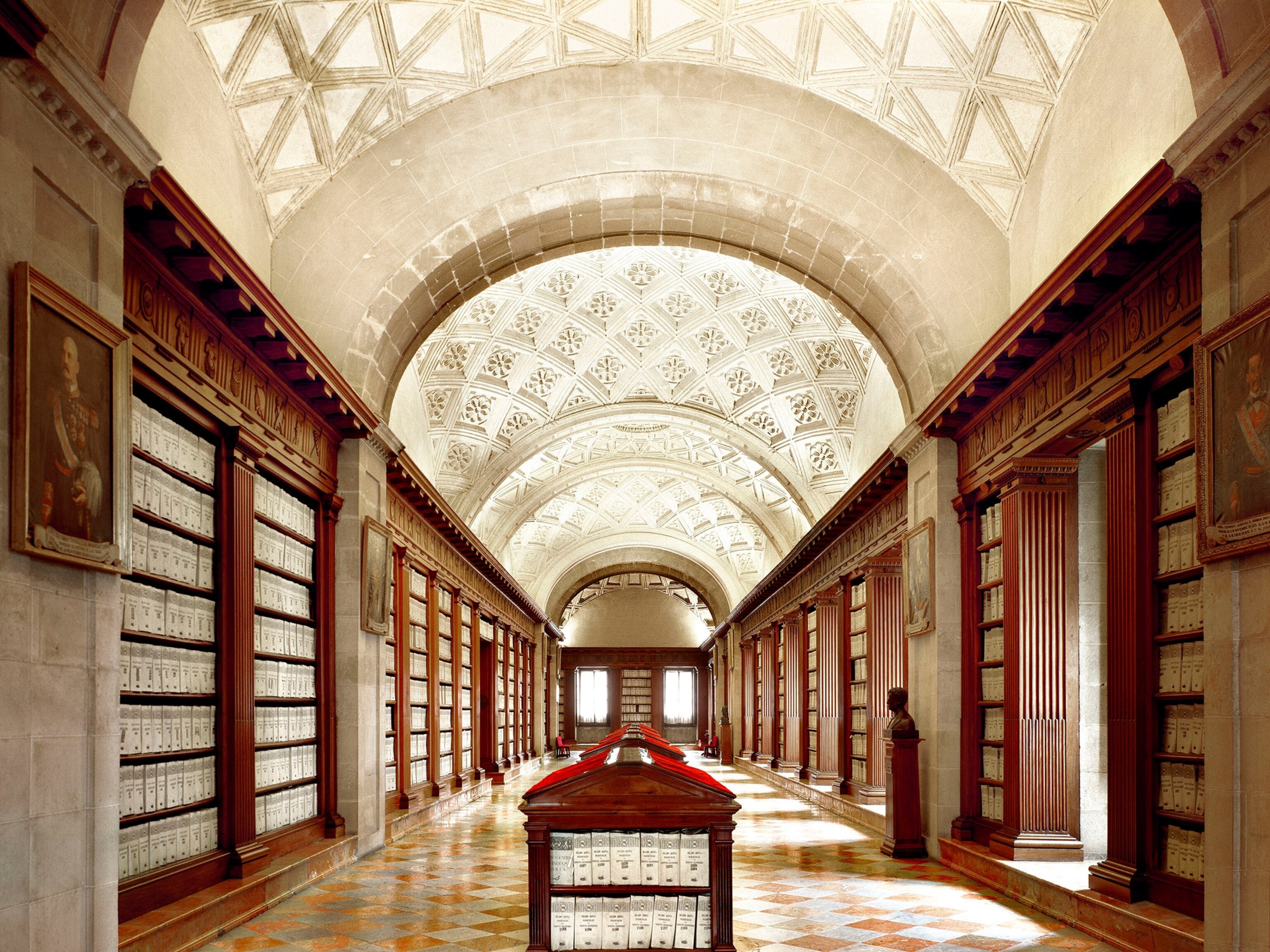






















See 23 of the world’s most enchanting libraries
From monasteries to royal reading rooms, get lost within these majestic libraries.
It has been said that reading books is surreal: You stare at marked slices of tree for hours on end, hallucinating vividly. Book lovers, therefore, are a strange bunch. They spend hours by themselves, escaping this world and immersing themselves in another. The variety of their worlds is as limitless as human knowledge. It’s a wonder that any one thing would bring these solitary souls together—until you consider the library. (See 14 other epic libraries around the world.)
Perhaps no institution in society holds as much promise as libraries do. For ancient monks, libraries were the repository of sacred knowledge; for early scientists, they made possible technical advancements and medical cures. The advent of the modern public library represents the greatest aspiration for civil society, namely that people would want to read, educate themselves, and actively broaden their horizons.
Of course, civil society is often under threat and therefore so are libraries. As repositories of theology and culture, libraries throughout history have come under fire—sometimes literally. Wars and fires have ravaged libraries, most notably the Library of Alexandria, but also lesser-known ones like Prague’s Strahov monastery library, which was destroyed by fire only to then suffer centuries of invading armies.
Threats to libraries aren’t always so extreme, though. The everyday problem of protecting antiquities from the ravages of time, or even merely from pests (both human and animal) is a principal concern. The Biblioteca Girolamini in Naples suffered at the hands of a crime ring that systematically plundered the collection in 2012, though librarians and bibliophiles the world over remarkably managed to recover the vast majority of stolen books.
Tasked with protecting our cultural heritage, librarians are unsung heroes, the first line of defense. But in Portugal, librarians find themselves with an unusual ally: bats. Book-loving insects are ingeniously kept at bay by bat colonies in such places as Coimbra’s Biblioteca Joanina and Mafra’s Biblioteca Municipal. (Explore the ancient temple full of meat-eating bats.)
Aside from books’ inherent value, libraries themselves often inspire awe and wonder. This is perhaps best illustrated when it comes to architecture. Some of history’s greatest architects have been commissioned to build libraries, from the Bibliothèque Sainte-Geneviève, Henri Labrouste’s precursor to the modern library, to the Seattle Public Library, a contemporary marvel designed by Rem Koolhaas.
In these photos, we take a closer look at some of the most remarkable and beautiful libraries in the world. These marvels—like St. Emmeram, renowned in the Early Middle Ages for its bookmaking, or the private collections of former nobles now available to the public—might just inspire you to explore new worlds of your own.
Related Topics
You May Also Like
Go Further
Animals
- Octopuses have a lot of secrets. Can you guess 8 of them?
- Animals
- Feature
Octopuses have a lot of secrets. Can you guess 8 of them? - This biologist and her rescue dog help protect bears in the AndesThis biologist and her rescue dog help protect bears in the Andes
- An octopus invited this writer into her tank—and her secret worldAn octopus invited this writer into her tank—and her secret world
- Peace-loving bonobos are more aggressive than we thoughtPeace-loving bonobos are more aggressive than we thought
Environment
- Listen to 30 years of climate change transformed into haunting musicListen to 30 years of climate change transformed into haunting music
- This ancient society tried to stop El Niño—with child sacrificeThis ancient society tried to stop El Niño—with child sacrifice
- U.S. plans to clean its drinking water. What does that mean?U.S. plans to clean its drinking water. What does that mean?
- Food systems: supporting the triangle of food security, Video Story
- Paid Content
Food systems: supporting the triangle of food security - Will we ever solve the mystery of the Mima mounds?Will we ever solve the mystery of the Mima mounds?
History & Culture
- Strange clues in a Maya temple reveal a fiery political dramaStrange clues in a Maya temple reveal a fiery political drama
- How technology is revealing secrets in these ancient scrollsHow technology is revealing secrets in these ancient scrolls
- Pilgrimages aren’t just spiritual anymore. They’re a workout.Pilgrimages aren’t just spiritual anymore. They’re a workout.
- This ancient society tried to stop El Niño—with child sacrificeThis ancient society tried to stop El Niño—with child sacrifice
- This ancient cure was just revived in a lab. Does it work?This ancient cure was just revived in a lab. Does it work?
Science
- The unexpected health benefits of Ozempic and MounjaroThe unexpected health benefits of Ozempic and Mounjaro
- Do you have an inner monologue? Here’s what it reveals about you.Do you have an inner monologue? Here’s what it reveals about you.
- Jupiter’s volcanic moon Io has been erupting for billions of yearsJupiter’s volcanic moon Io has been erupting for billions of years
- This 80-foot-long sea monster was the killer whale of its timeThis 80-foot-long sea monster was the killer whale of its time
Travel
- How to plan an epic summer trip to a national parkHow to plan an epic summer trip to a national park
- This town is the Alps' first European Capital of CultureThis town is the Alps' first European Capital of Culture
- This royal city lies in the shadow of Kuala LumpurThis royal city lies in the shadow of Kuala Lumpur
- This author tells the story of crypto-trading Mongolian nomadsThis author tells the story of crypto-trading Mongolian nomads




